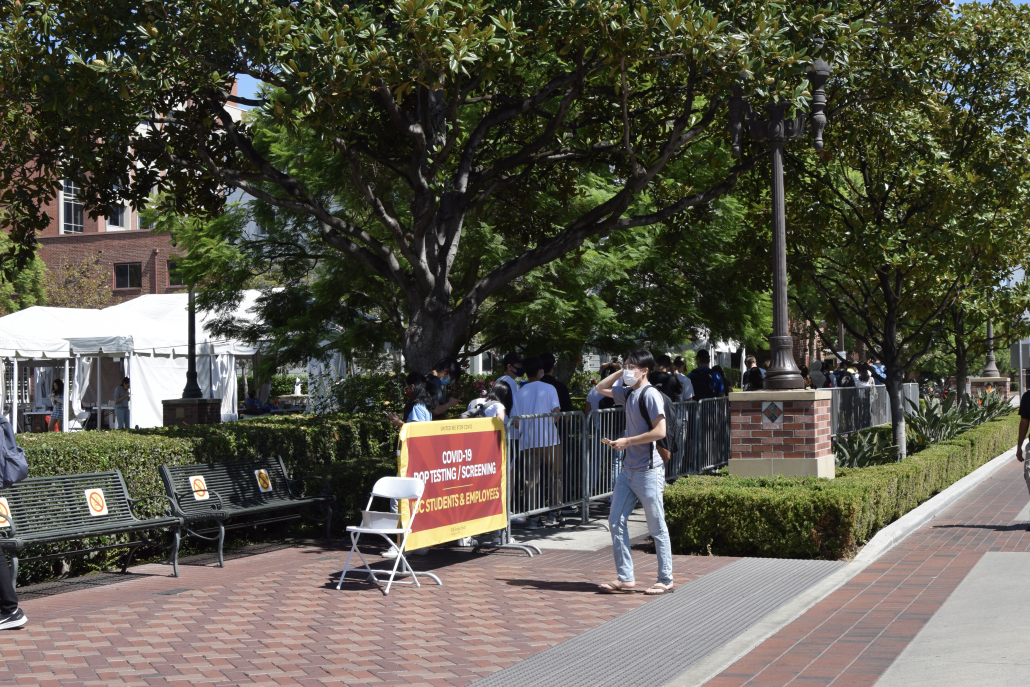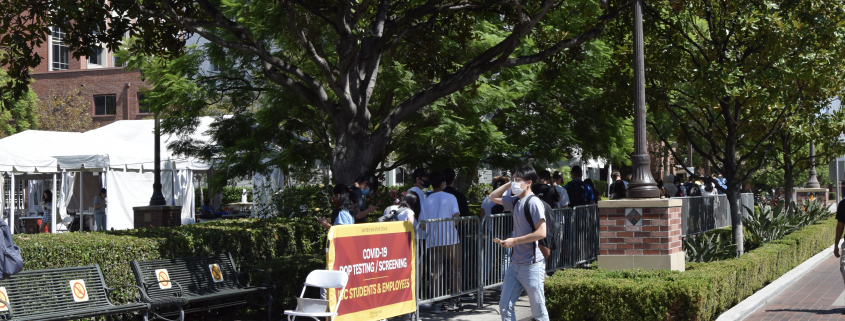Princeton professor discusses healthcare disparities

From the bubonic plague to the Spanish flu to the coronavirus, Henry Putnam University professor of History and Public Affairs at Princeton University Keith Wailoo presented a lecture about what pandemics throughout history have revealed about society and its racial and class disparities Wednesday.
USC Visions and Voices invited Wailoo to speak as part of Race, Justice and Medicine in the 21st Century, a lecture series that welcomes three acclaimed scholars of race, gender and medicine to speak on some of the most challenging issues that affect the health of individuals and society. In the hybrid event — where students attended on Zoom or in the Mayer Auditorium at the Health Sciences Campus — –Wailoo spoke and shared slides from Princeton University.
Currently serving as President of the American Association for the History of Medicine, Wailoo started his academic career teaching social and cultural aspects of health and science at University of North Carolina Chapel Hill, where he focused on current issues in healthcare and medical education, and used an understanding of history to inform contemporary practices. Wailoo’s research includes history and health policies and the politics of race and health, covering topics such as gun and drug policies.
“We knew of his work as a historian, and we thought, particularly at this moment in history, in the middle of the COVID pandemic, that his work in studying other pandemics and what they reveal about American society would help show us the unequal burden of COVID-19 for people of color in this country,” said Dr. Pamela Schaff, Director of Keck School of Medicine’s Humanities, Ethics/Economics, Arts and the Law program, in an interview with the Daily Trojan.
On behalf of the Vision and Voices team, Marie-Reine Velez started the event by acknowledging USC’s location on Indigeneous land and honoring the histories of original inhabitants the Tongva, Chumash and Keach peoples and of the African diaspora.
Wailoo’s presentation first focused on stories about inequality in two major coronavirus pandemic waves. He shared a chart from the New York Times that showed that, in November 2020, during what Wailoo called the pandemic’s first wave, infections in the United States surpassed 11 million and the Black and Latinx community represented a disproportionate number of cases, infections and mortalities. Inequalities worsened as unemployment soared while those who could afford it retreated to “smaller, more secure worlds.” The pandemic’s second wave presented vaccine distribution disparities.
“New disparities along the lines of vaccine uptake, race and class region, accentuated by political partisanship, drove new realities in infection levels, as well as in the death rate,” Wailoo said.
Wailoo discussed the issues that pandemics often highlight. The coronavirus raised questions about theories of disease such as asymptomatic transmission, and virus evolution and transmission. It also sparked debates around proper prevention tactics, the government’s role and a strong public health system. Conversations also arose about the sociology of vulnerability and blame as well as the power of both information and disinformation, Wailoo said.
Wailoo then compared the experiences of the coronavirus pandemic to those of previous pandemics. His slides, which contained various visuals of historical documents such as drawings and book photos, ran through a list of patterns in the responses to and the societal effects of pandemics such as the cholera pandemic in the 19th century and the influenza pandemic in the 20th century.
Using writer Daniel Defoe’s characterization of the 17th century bubonic plague in London, when the outer parishes that housed the poor were heavily stricken, Wailoo explained that pandemics often reveal the face of poverty. The same pattern could be found in the cholera and yellow fever pandemics. The extensive public suffering during previous pandemics became drivers for change, Wailoo said.
“One of the things that you can often see is the way in which the public suffering that was witnessed through these graphic examples of people afflicted in the populous central portions of the city can become a rallying cry for quarantine, for aggressive public health measures, street cleaning, closing the boards and also all manner of street cleaning and public health,” Wailoo said.
The pandemics have often expanded government reach, which people have met with protests, Wailoo said. He provided a recent example from Canada, when Prime Minister Justin Trudeau invoked emergency powers in response to truckers’ protests against vaccine mandates.
Wailoo also spoke about how blame functions during pandemic — and the rich literature that discusses it — as well as racist, fear-mongering language often used.
Following Wailoo’s presentation, students asked questions, either through the Zoom Q&A or, if they were participating in-person, through a microphone in the front of the auditorium.
Event organizer and Alexander Capron closed the event by asking attendees to consider carrying the experience and lessons of the pandemic and event forward.
“Will that shock of each stamp of death from this and illness cause us to build up our public health system?” said Capron, USC professor of law and medicine. “Or will the fact that the burden was borne mostly by the disadvantaged make us shrug it off?”

